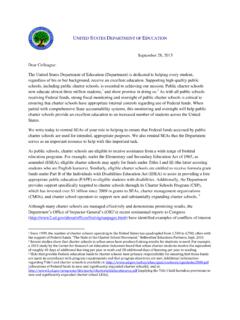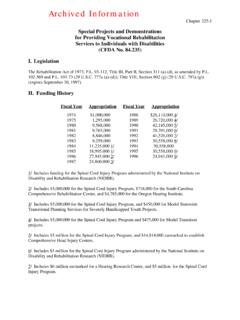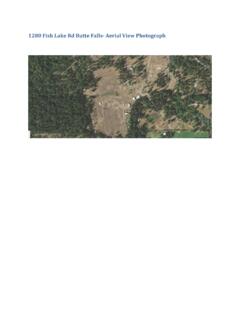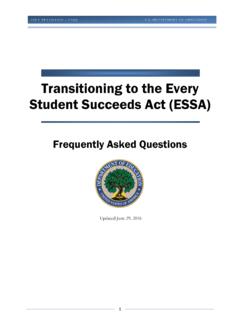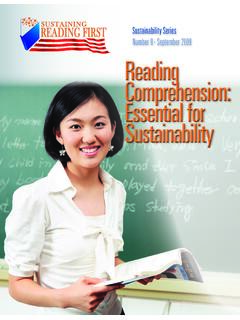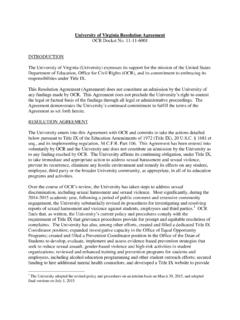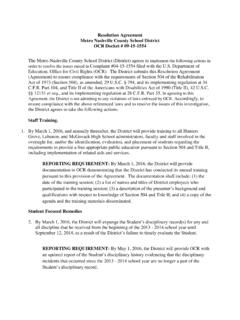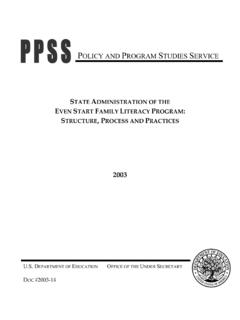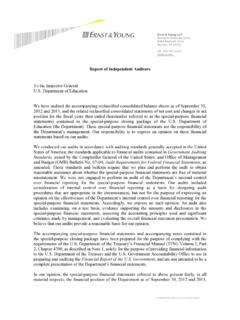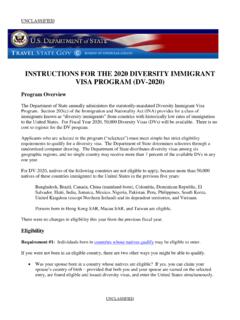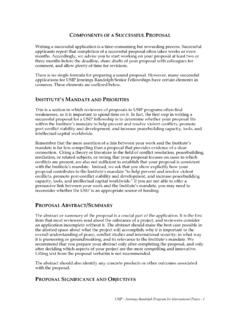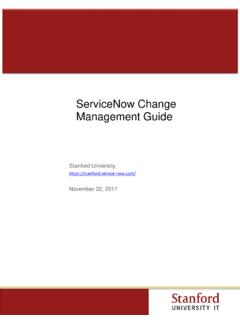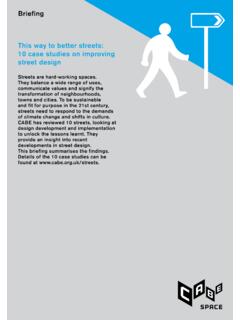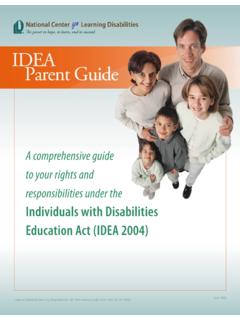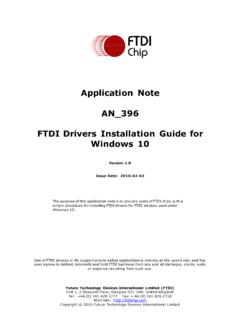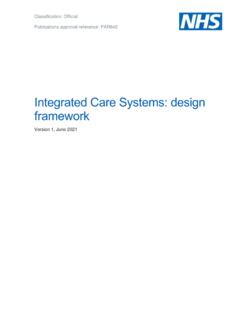Transcription of Second Chance Pell Fact Sheet (PDF) - ed
1 Second Chance pell Fact Sheet The Higher Education Act (HEA) provides that students who are incarcerated in a Federal or State penal institution are not eligible to participate in the Federal pell Grant program, which provides need-based grants to low-income undergraduate and certain post-baccalaureate students to promote access to postsecondary This restriction prevents many otherwise eligible incarcerated individuals from accessing financial aid and benefiting from postsecondary education and training. On August 3, 2015, the Department of Education released a Federal Register notice inviting institutions of higher education (IHEs) to apply to participate in a new institutionally-based initiative under the Experimental Sites Initiative (ESI), which tests the effectiveness of statutory and regulatory flexibility for IHEs that disburse Federal student This initiative will allow participating IHEs, in partnership with one or more Federal or State penal institutions, to provide Federal pell Grant funding to otherwise eligible students who are incarcerated and who are eligible for release back into the community, particularly those who are likely to be released within five years of enrollment in the program.
2 It is important to note that this initiative will only provide Federal pell Grants to a select number of individuals in Federal and State penal institutions. In December 2014, the Department of Education issued a Dear Colleague Letter on Access to pell Grants for Students in Juvenile Justice Facilities clarifying that students who are confined or incarcerated in locations that are not penal institutions, such as juvenile justice facilities and local or county jails, and who otherwise meet applicable eligibility criteria, are already eligible for Federal pell This fact sheet4 (also in Spanish5) includes more information about pell eligibility for justice-involved populations. What is the purpose of this initiative? This initiative will test whether participation in high-quality educational opportunities increases after access to financial aid for incarcerated adults is expanded and examine how waiving the restriction on providing pell Grants to individuals incarcerated in Federal or State penal institutions influences academic and life outcomes.
3 According to a Department of Justice-funded 2014 study from the RAND Corporation, incarcerated individuals who participated in high-quality correctional education including postsecondary correctional education were 43 percent less likely to return to prison within three years than prisoners who didn't participate in any correctional education programs. Furthermore, it is estimated that for every dollar invested in correctional education programs, four to five dollars are saved on three year re-incarceration Thus, through this initiative, the Department of Education aims to support the successful transition of justice-involved individuals out of prison and back into the classroom or the workforce. 1 2 3 4 5 6 Who is eligible to apply?
4 Title IV-eligible IHEs, in partnership with one or more Federal or State penal institutions, are eligible to apply for this initiative. How will IHEs be selected? The Department of Education will select a limited number of institutions to participate in this initiative, carefully considering institutional diversity, as well as evidence that demonstrates a strong record on student outcomes and in the administration of the Title IV HEA programs. What are the requirements for participation in this initiative? Through this initiative, the Department of Education will require that any Title IV-eligible postsecondary institution will: partner with one or more Federal or State correctional facilities to offer one or more Title IV-eligible academic programs to incarcerated students; work with the partnering correctional facility or facilities to encourage interested students to submit a Free Application for Federal Student Aid (FAFSA); only enroll students in postsecondary education and training programs that prepare them for high-demand occupations from which they are not legally barred from entering due to restrictions on formerly incarcerated individuals obtaining any necessary licenses or certifications for those occupations.
5 Disclose to interested students and to the Department of Education information about any portions of a program of study that, by design, cannot be completed while students are incarcerated, as well as the options available for incarcerated students to complete any remaining program requirements post-release; offer students the opportunity to continue their enrollment in the academic program if the student is released from prison prior to program completion, as appropriate; inform students of the academic and financial options available if they are not able to complete the academic program while incarcerated. This includes whether the students can continue in the program after release, transfer credits earned in the program to another program offered by the institution, or transfer credits earned in the program to another postsecondary institution; and submit plans for how it, in collaboration with Federal or State correctional facilities, will provide academic and career guidance, as well as transition services to incarcerated students in order to support successful reentry.
6 How should IHEs apply? In order for IHEs to be considered for participation in the initiative described in the ESI notice, IHEs must submit a letter of interest to the Department of Education, following the procedures outlined in the Federal Register notice below, no later than Friday, October 2, 2015 to receive priority consideration.
